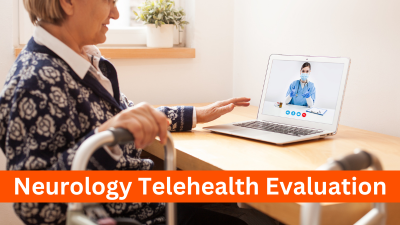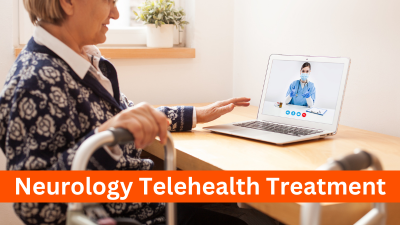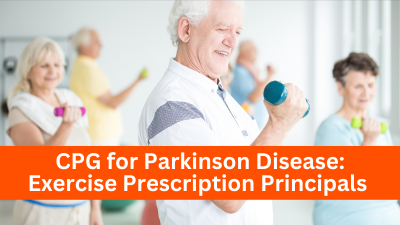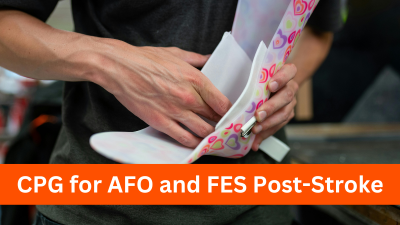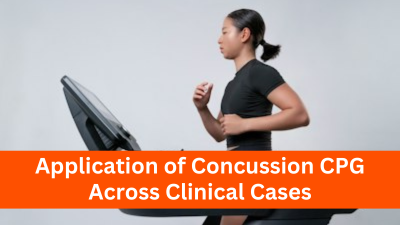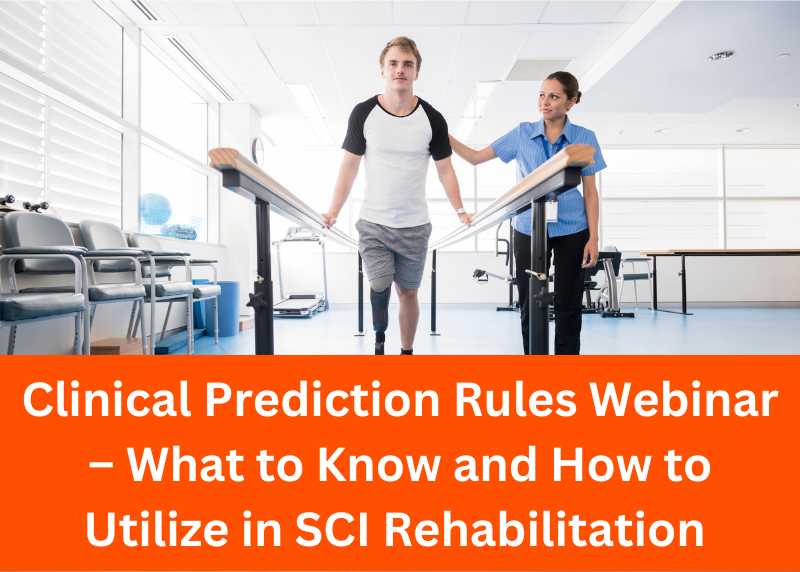
Catalog Advanced Search
-
Contains 4 Component(s), Includes Credits
Part 1 of this 2-Part Hot Topic Webinar Series will describe motivational interviewing, a counseling style used to help people change their behavior. The course features a unique and inspiring collaboration between the presenters- a nurse and a physical therapist- each with expertise on the topic. ANPT Hot Topic Webinar from July, 2025
This 2-Part Hot Topic Webinar Series hosted by the Academy of Neurologic Physical Therapy Practice Committee will describe motivational interviewing, a counseling style used to help people change their behavior. Motivational interviewing spirit is an interpersonal style characterized by the absence of confrontation or persuasion and by the acceptance of the person, expressed by empathy, respect and support. Motivational interviewing skills of open-ended questions, affirmations, reflective listening, summarization and providing information or advice with permission will be introduced and demonstrated in the context of neurologic physical therapy. The importance/confidence rulers and research using motivational interviewing will also be highlighted. This impactful Webinar features a unique and inspiring collaboration between the presenters- a nurse and a physical therapist- each with expertise on this topic.
Course Recorded July 2025

Linda Ehrlich-Jones
PhD, RN, FACRM, FAAN
Dr. Linda Ehrlich-Jones, PhD, RN, FACRM, FAAN is the Associate Director, Center for Rehabilitation Outcomes Research at the Shirley Ryan AbilityLab (formerly the Rehabilitation Institute of Chicago) and a Clinical Research Scientist. She is a Research Professor in the Department of Physical Medicine & Rehabilitation at Northwestern University, Feinberg School of Medicine. Linda has expertise in behavioral interventions, targeting persons with chronic illness to promote healthy lifestyles and health self-management. She has been involved in creating behavioral interventions, using motivational interviewing, targeting persons with chronic illness to increase physical activity and improve diet. She is a Co-PI on a clinical trial (R01AR071091) to decrease fatigue in people with lupus by increasing physical activity and increasing consumption of fruits and vegetables using motivational interviewing, as well as the PI on a Craig H Neilsen Foundation Demonstration Project focusing on Enhancing Rehabilitation Participation in Patients with SCI/D Using Motivational Interviewing. She serves as the motivational interviewing expert on the U01AR080346 Losina (PI) KArAT designed to evaluate an innovative application of behavioral science principles that invoke both internal motivation (using motivational interviewing) and external motivation (using financial incentives) to improve physical activity among persons with knee osteoarthritis undergoing total knee replacement. Linda has been a member of the Motivational Interviewing Network of Trainers since 2006.
Provides MI training to Community Health Workers in marginalized communities with Movement is Life, a non-profit organization. Provides MI training skills, MI interventions, and MI fidelity assessment to a variety of audiences funded by NIH, NIDILRR, and Craig H. Neilsen Foundation.

Jamie Nesbit
PT, DPT, NCS, GCS
Dr. Jamie Nesbit (she/her) is a physical therapist and assistant professor at Creighton University – Phoenix. She received her Doctor of Physical Therapy degree from Washington University in St Louis in 2011. Dr. Nesbit has worked as a full-time clinician for 10 years, primarily in the outpatient neurologic setting. She became a Board-Certified Clinical Specialist in Neurologic Physical Therapy in 2014 and a Board-Certified Clinical Specialist in Geriatric Physical Therapy in 2015. She is trained in vestibular rehabilitation, a certified LSVT BIG and PWR! Therapist, and consults as a LiteGait trainer for Mobility Research. She has a special interest for wellness models and incorporating these models into care for people with neurodegenerative disorders. Research and scholarly activities have centered around physical therapy treatment and wellness with individuals with neurodegenerative diseases, as well as examining use of practice models in the clinic and interprofessional collaboration. She serves as the chair of the Health Promotion and Wellness Committee for the Academy of Neurologic Physical Therapy.
-
Register
- Non-member - Free!
- PT Member - Free!
- More Information
-
Register
-
Contains 4 Component(s), Includes Credits
The goal is to provide the neurologic practitioners with up-to-date valid resources needed to implement telehealth into their neurologic physical therapy evaluation.
This course is designed to provide Physical Therapists concrete clinical tools for evaluation of patients with neurologic dysfunction via Telehealth. This course is a culmination of expert consensus brought together and published evidence. The content of the course will include demonstration of tests and measures and patient videos of varying neurological conditions. The presenters will also provide a framework to determine appropriateness of your patient for telehealth, the Telehealth Traffic Light. This course will not include information about regulations, compliance, documentation, but will cite resources for participants in order to obtain this information. This course will not address specific neurologic diagnoses and is designed to provide tests and measures to use across any neurologic patient population.
Learning Objectives:
1. Determine which patients are appropriate for neuro telehealth
2. Choose and apply Telehealth PT test and measures in clients with a neurological diagnosis using case studies and video demonstrations
3. Implement appropriate modifications to test and measures based on functional level and safety
4. Understand which Telehealth compliance and regulatory resources are valid and how to access them in order to perform telehealth services at your practiceCourse launched March 2025

Hina Garg
PT, MS, PhD, NCS
Hina Garg is a board certified neurologic clinical specialist who specializes in optimizing the clinical assessment and treatment
practices using implementation science and quality improvement frameworks in individuals with MS and other neurologic
conditions. She is an associate professor (Physical Therapy), MS PT & Wellness Center Director, and the Interim Director of the
Office of Research and Sponsored Projects at the Rocky Mountain University of Health Professions (RMUoHP). She completed
her Bachelor of PT from India, M.S. from Texas A & M University and PhD in Rehabilitation Science from the University of
Utah. At the RMUoHP and related clinic systems, Hina has developed, implemented, and disseminated multiple care models
including those for individuals with MS, vestibular, pelvic and post-covid rehabilitative needs. In 2019, she was recognized by
the Academy of Neurologic Physical Therapy (ANPT) and the Utah Valley business magazine as an innovative professional for
establishing the MS center. She currently co-chairs the ANPT telehealth taskforce, serves within the ANPT DEI and Balance
and Falls workgroups, serves as a grant reviewer at the national level, is a current reviewer for multiple neurologic journals, a
published author and has presented and served at the state and national conferences and boards on her clinical and
research interests. Her passion is in the use of data in clinical and administrative decision making, evidence-based clinical
practice, and training and development of faculty and student colleagues, clinicians and other staff members.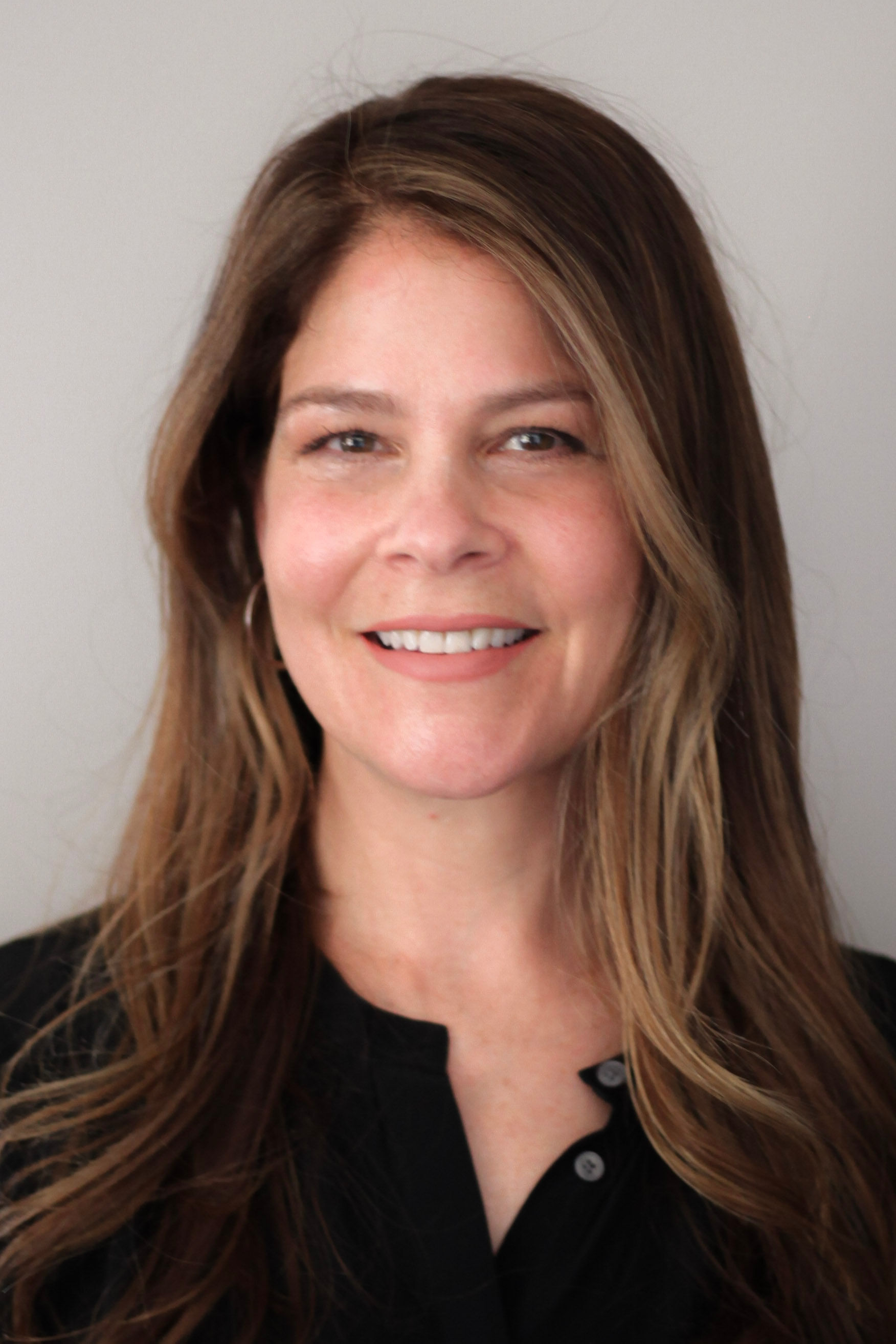
Sarah Gallagher
PT, DPT, NCS
Dr. Sarah Gallagher PT, DPT, NCS obtained her Doctorate of Physical Therapy from MGH Institute of Health Professions and
completed a yearlong internship at Massachusetts General Hospital in acute care, specifically neuro-trauma patient care. She
is the owner of South Valley Physical Therapy in Denver, CO which specializes in neurologic and vestibular rehabilitation. Dr.
Gallagher identified that access to expert vestibular rehab is limited due to: deficiency of vestibular therapists to serve the
state of Colorado, long/difficult travel distances, and dizziness impeding commuting to the clinic. This problem led her to
found The Dizzy Clinic, providing vestibular rehab via videoconferencing in 2017 as well as implemented telerehab at South
Valley PT for insurance reimbursement. She lectures at the University of Colorado PT school on vestibular rehabilitation and
telehealth. She has co-presented on implementing telerehab at CMS in 2019, 2020 and 2021 as well as several state chapterATPA conferences. She advocates for telehealth at a state and national level and participates in the APTA FiRST Council,
Telehealth track, and is founder and chair of the Vestibular SIG Telehealth Task Force and currently serves on the ANPT
Telehealth Task Force. She was awarded Colorado PT of the Year in 2020 for her education to PTs and business owners how
to implement telehealth quickly, safely and in compliance. Dr. Gallagher was invited to collaborate on the creation of the
APTA’s Telehealth Certificate Series Course and presented in several of the modules. She was an invited member of a
Videoconferencing Advisory Group for a project at the University of Melbourne that lead to a framework of competencies for
physiotherapists internationally to perform telehealth. She authored an article for VeDA (Vestibular Disorders Association) on
telerehab with vestibular patients in 2018 and co-authored Advocacy for Telehealth Services in 2021 in the Journal of PT
Policy, Administration and Leadership in 2021. Under her leadership, South Valley Physical Therapy continues to treat
approximately 20% of their patients via telehealth.
Emily Schultz
PT, DPT, NCS
Dr. Emily Schultz, PT, DPT is a Board Certified Neurologic Clinical Specialist and a Program Director at Re+active Physical
Therapy and Wellness in Los Angeles, California. Dr. Schultz received her Doctorate of Physical Therapy degree from the
University of Evansville in 2016 and graduated from the University of Southern California and Rancho Los Amigos National
Rehabilitation Center's Neurologic Physical Therapy Residency Program in 2017. Prior to her relocation back to Los Angeles,
Dr. Schultz worked at the University of Miami as a full time outpatient physical therapist and as Core Faculty and Mentor in
the UM and JRH Neurologic Physical Therapy Residency Program. During her time at the University of Miami, Dr. Schultz
served as the lead PT in the Parkinson's Disease Center of Excellence, Co-founded the University of Miami's Functional
Movement Disorders Division, and spearheaded efforts to develop an Outpatient Telehealth PT Program for individuals with
neurologic diagnoses. Dr. Schultz was identified as the team lead in the provision of telehealth services for the Department of
Physical Therapy and directed staff and student training modules and experiences during the COVID 19 pandemic shut down
and beyond. Dr. Schultz is a committee member of the Academy of Neurologic Physical Therapy's Neurologic Telehealth Task
Force and is actively engaged in other clinical-based research and improvement initiatives related to the utilization of
telehealth physical therapy services for individuals with neurologic diagnoses.
Gregory Thielman
PT, MSPT, EdD, ATC
Greg Thielman PT, MSPT, EdD, ATC, CSRS received his B.S. and M.S. in physical therapy from Springfield College and his
doctorate in education with a movement sciences focus at Columbia University. He is a certified stroke rehabilitation
specialist with interests in both geriatrics and neurology. Dr. Thielman has presented and been published nationally, with his
main areas of scholarship being in upper extremity recovery for post stroke. Dr. Thielman was a long time faculty member at
USciences and is now a full professor at Saint Joseph's University. He has received 3 NIH grants, and has lead the
International Medical Mission Trip for Samson College programs since 2017. In addition to the telehalth task force he is a
member of the PA Minority Affairs committee.-
Register
- Non-member - $68
- PT Member - $50
- Reviewer - Free!
- More Information
-
Register
-
Contains 4 Component(s), Includes Credits
The goal is to provide the neurologic practitioners with up-to-date valid resources needed to implement telehealth into their neurologic physical therapy intervention.
This course is designed to provide Physical Therapists concrete clinical tools for treatment of patients with neurologic dysfunction via Telehealth. This course is a culmination of expert consensus brought together and published evidence. The content of the course will include demonstration of treatment and patient videos of varying neurological conditions, including Multiple Sclerosis, Parkinson Disease, Stroke, and others. The presenters will review interventions that can be used in multiple neurologic patient populations through case-based examples and videos. This is the second course of a two-part series. The first part addresses evaluation of patients with neurologic disorders via telehealth.
Learning Objectives:
1. Identify the best practices for delivering optimal and meaning patient care in the telehealth environment for clients with neurological conditions
2. Choose and apply Telehealth PT interventions in clients with a neurological diagnosis to ensure meaningful outcomes using case studies and video demonstrations
3. Construct and implement appropriate modifications to interventions based on functional level and safety
4. Identify effectiveness of interventions provided via Telehealth
5. Recognize indications that would warrant a return to clinic may be neededCourse launched March 2025
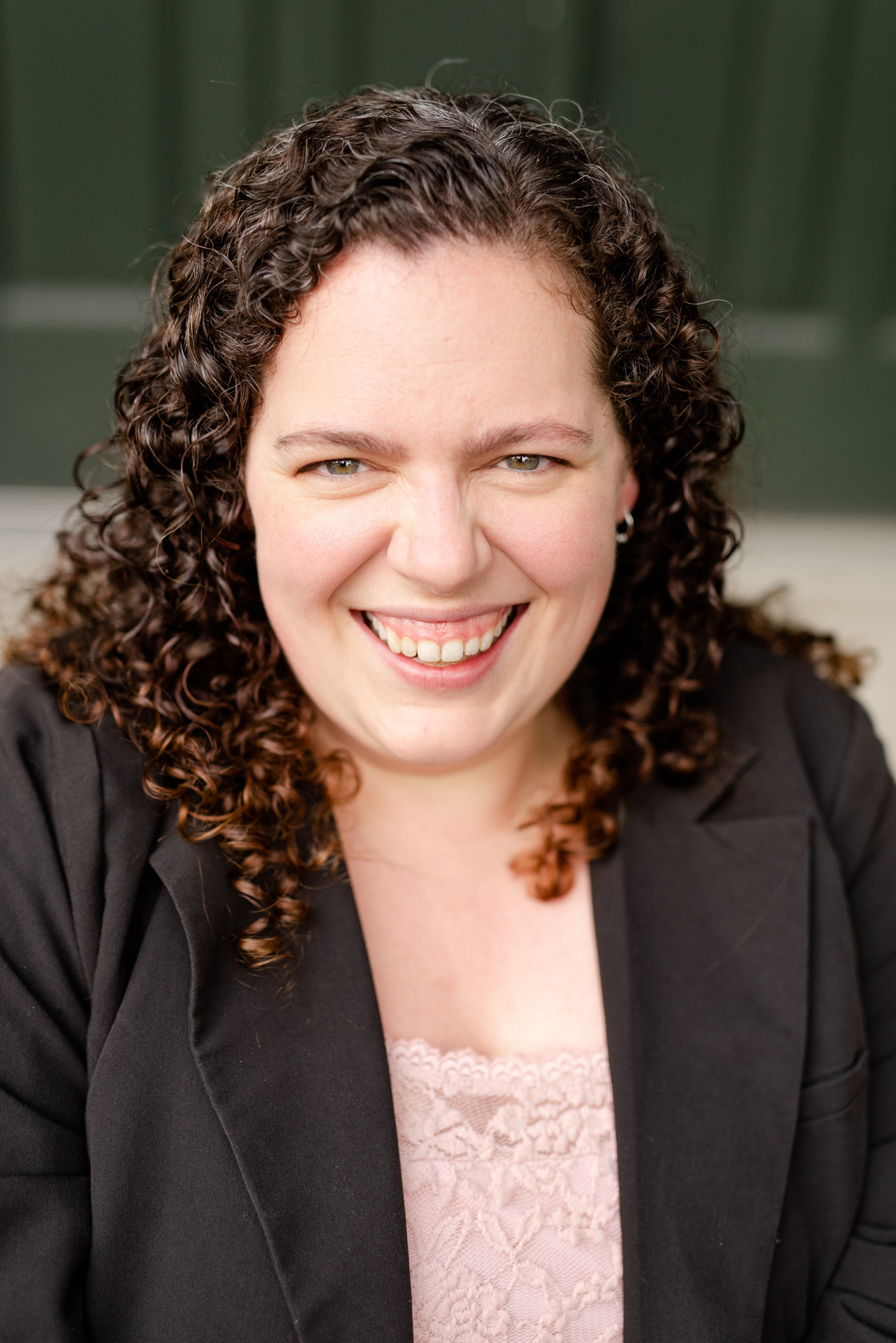
Brittany Kennedy
PT, DPT, NCS
Brittany E. Kennedy earned her Doctorate of Physical Therapy from St. Francis University in 2012 and became an ABPTS board
certified clinical specialist in neurologic physical therapy in 2014 after completion of the Neurologic PT Residency Program
through Marquette University and the Clement J. Zablocki VA Medical Center in Milwaukee, WI. After working as a physical
therapist serving individuals with a wide range of neurologic diagnoses, serving as residency mentor, and adjunct assistant
professor for 10 years, she has transitioned to the role of Director of Clinical Education at St. Francis University in Loretto, PA.
Dr. Kennedy is committed to clinical and academic excellence, evidenced-based practice, and lifelong learning. She is a
member of the American Physical Therapy Association, Academy of Neurologic Physical Therapy, APTA Academy of Education,
and serves as committee member on the ANPT Telehealth Taskforce.
Aimee Perron
PT, DPT, NCS
Aimee E. Perron earned her MS in Physical Therapy from Boston University and DPT from Massachusetts General Hospital
Institute of Health Professions. She has spent 25+ years as a clinician, instructor, and leader in post-acute care settings with
the majority of experience in neurologic and geriatric practice. Dr. Perron is passionate and committed to clinical excellence
using evidence-based and client-centered practices. She serves as a clinical leader and academic instructor and strives to
inspire colleagues and students to be strong advocates to ensure patients have access to the care they need and are able to
achieve meaningful outcomes. Dr. Perron is dedicated to lifelong learning and through this commitment; she has achieved
American Physical Therapy Association (APTA) board certification Specialist in Neurological PT and is a Certified Expert for the
Aging Adult. Dr. Perron is an active APTA member and leader at the state and national levels and has presented nationally on
a variety of topics. Additionally, Dr. Perron is a committee member of the Academy of Neurologic Physical Therapy's Practice
Committee and Neurologic Telehealth Task Force.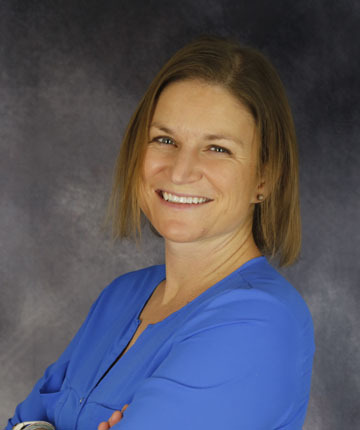
Sara Oxborough
PT
Sara Oxborough received her Bachelor of Arts in Kinesiology and Master's Degree in Physical Therapy at the University of Wisconsin, Madison. She gained interest in Vestibular Rehabilitation while doing clinical rotations in her hometown of Kenosha, WI, where she learned the effectiveness of vestibular rehabilitation, as well as the rewards of therapy.
Sara has been the director of the Physical Therapy Department at National Dizzy and Balance Center since 2008. She enjoys treating a wide range of vestibular disorders especially concussion and vestibular migraine. Sara received Competency Certifications from Emory University, Atlanta, GA and American Physical Therapy Association in Vestibular Rehabilitation in 2009. In addition to clinic practice, Sara is a member of the leadership team of the Vestibular Special Interest Group through the American Physical Therapy Association.
Sara was involved in the development of the American Physical Therapy Association sponsored course entitled Expanding Neurologic Expertise: Introduction to Vestibular Rehabilitation, for which this course was based on. She was involved in presenting many times nationally as well. Sara has done many presentations through the Twin Cities regarding vestibular disorders and recently spoke at APTA’s Combined Sections Meeting regarding telehealth and vestibular therapy.

Qing Zhang
PT, DPT, NCS
Qing Zhang is a Board-Certified Clinical Specialist in Neurologic Physical Therapy with over ten years of experience working at
the inpatient and outpatient rehabilitation teams in China and the United States. She earned her Medical Doctor degree from
Beijing University of Chinese Medicine in 2002 and her Doctorate of Physical Therapy from the University of Nevada, Las
Vegas in 2014. Dr. Zhang completed the Neurologic PT Residency Program at Creighton University and worked as a neurologic
residency program coordinator and neurologic physical therapist for over seven years. She currently works as an assistant
professor at Hawaii Pacific University DPT program. During her more than ten years of clinical practice, Dr. Zhang has served
people with neurological impairments and a multidisciplinary team of movement disorders. She is particularly interested in
working with patients with stroke, Parkinson's disease, and multiple sclerosis and focusing on telehealth and health
promotion and wellness. Dr. Zhang currently serves on the Academy of Neurologic Physical Therapy Neurologic TelehealthTask Force, the American Board of Physical Therapy Residency and Fellowship Education, and the NCS Exam: Special Topic
Review and Discussion Board as a team member.-
Register
- Non-member - $68
- PT Member - $50
- Reviewer - Free!
- More Information
-
Register
-
Contains 7 Component(s), Includes Credits
Clinical Practice Guideline for People with Parkinson Disease: Exercise Prescription Principles Part 1
Upon completion of this course, learners will be able to:
- Critically examine the CPG recommendations (action statements) and how they can be implemented across different stages of Parkinson disease.
- Describe strategies to overcome barriers to CPG implementation including newly developed knowledge translation tools.
- Contrast the application of the CPG across practice settings.
- Discuss exercise prescription for individuals with mild-moderate Parkinson disease within the context of each action statement.
Course published February 2025

Christina Criminger-Morris PT, PhD, CEEAA
Adjunct Assistant Professor
Duke University and UNC School of Medicine
Christina Criminger-Morris PT, PhD, CEEAA, Board-Certified Geriatric Clinical Specialist is an Adjunct Assistant Professor at Duke University and UNC School of Medicine. She currently teaches human gross anatomy, geriatrics, neuroscience, and neurologic rehabilitation courses within the DPT curriculum. She has over 12 years of clinical practice specializing in geriatrics and neurological conditions across settings. She completed the Parkinson’s Foundation Faculty Scholar program in 2019 expanding and refining her teaching expertise for entry-level DPT Parkinson’s curriculum. She serves on the African American Parkinson’s Disease committee sponsored by the Parkinson’s Foundation and Carolina’s Parkinson’s Disease chapter and was an appointed member of the Academy of Neurologic Physical Therapy Knowledge Translation task force for implementation of the Clinical Practice Guidelines for Physical Therapist Management of Parkinson Disease.
No relevant financial relationships to disclose.

Anson B. Rosenfeldt, PT, DPT, MBA
Senior Physical Therapist
Cleveland Clinic
Anson B. Rosenfeldt, PT, DPT, MBA, Board-Certified Neurologic Clinical Specialist, graduated with her Bachelor of Science from the University of Dayton, Doctorate in Physical Therapy from Belmont University, and Masters in Business Administration from Cleveland State University. After beginning her career in acute care at the Cleveland Clinic, she transitioned into a research position specializing in exercise interventions for individuals with neurological disease. Her clinical and research interests involve the impact of aerobic exercise, dual-tasking, and technology on motor and non-motor symptoms of PD. In 2013, Dr. Rosenfeldt was awarded APTA’s Emerging Leaders Award and received the Journal of Acute Care Physical Therapy Writing Scholarship in 2015. She earned her APTA Board Certified Neurological Specialist Certification in 2015. From 2018-2021, she served on the APTA PTA Neurologic Advanced Proficiency Pathway Task Force and the ANPT Parkinson’s disease Clinical Practice Guidelines Knowledge Translation Task Force from 2021-2024. Dr. Rosenfeldt also currently serves on the Ohio House of Delegates.
No relevant financial relationships to disclose.
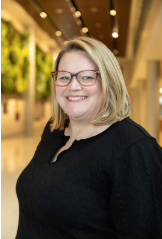
Leslie O’Neill PT, DPT, NCS
Assistant Professor of Practice
University of Delaware
Leslie O’Neill PT, DPT, NCS is an Assistant Professor of Practice at the University of Delaware with over 12 years of clinical practice in the area of neurology and geriatrics. She teaches the DPT content for Parkinson’s Disease, balance, and lab with stroke survivors. She completed the Parkinson’s Foundation Faculty Scholar program in 2017 and now serves on the Academy of Neurologic Physical Therapy Knowledge Translation task force for implementation of the Clinical Practice Guidelines for Physical Therapist Management of Parkinson Disease. Leslie is also the Associate Director for Neurologic and Older Adult Clinical Services in the UDPT Clinic.
No relevant financial relationships to disclose.
-
Register
- Non-member - Free!
- PT Member - Free!
- Reviewer - Free!
- More Information
-
Contains 5 Component(s), Includes Credits
Clinical Practice Guideline for People with Parkinson Disease: Case Application Across Disease Stages Part 2
Upon completion of this course, learners will be able to:
- Prepare clinicians, administrators, and patients to effectively and efficiently implement the practice guidelines within evolving healthcare systems.
- Critically examine application of the Clinical Practice Guideline (CPG) across health care settings and disease stages using case examples.
- Identify and address barriers and facilitators that impact selection of interventions.
- Understand strategies to promote health and physical activity outside of a clinical setting using a behavior change approach.
Course published February 2025

Deb Kegelmeyer (Moderator)
DPT, MS, GCS
Dr. Kegelmeyer has over 30 year’s clinical experience and is currently a Professor of Health and Rehabilitation Sciences at The Ohio State University. She has extensive clinical expertise having worked in acute care, out-patient therapy and spent 10 years as director of physical therapy at a skilled nursing facility. Currently she works as a consultant at the Movement Disorders Clinic at Wexner Medical Center, Ohio State University. She studies mobility and fall prevention in individuals with neurodegenerative diseases and the elderly. Her publication titles include use of the Tinetti Mobility Test in Parkinson and Huntington’s disease and use of Dance, Dance Revolution to improve balance in Huntington’s disease. She is also one of the co-authors of the textbook, Neurologic Rehabilitation: Neuroscience and Neuroplasticity in Physical Therapy Practice.
Deb Kegelmeyer has received funding from the Michael J. Fox Foundation and is an author of Neurologic Rehabilitation and receives royalty payments.

Beth Crowner (Moderator)
PT, DPT, NCS, MPPA
Beth Crowner PT, DPT, NCS, MPPA is a Professor of Physical Therapy and Neurology at Washington University’s Program in Physical Therapy. She teaches curricular content pertaining to evaluation and management of neuromuscular conditions and continues to see patients in the Program’s clinical practice. She has served on the Academy of Neurologic Physical Therapy’s Board of Directors as the Director of Practice, StrokEDGE taskforce and in leadership roles in the Balance and Falls SIG and Practice Committee. She has worked to help develop the ANPT structure for knowledge translation and is passionate about incorporating evidence in practice and curricula to optimize practice and patient outcomes.
Beth Crowner has no relevant financial relationships to disclose.
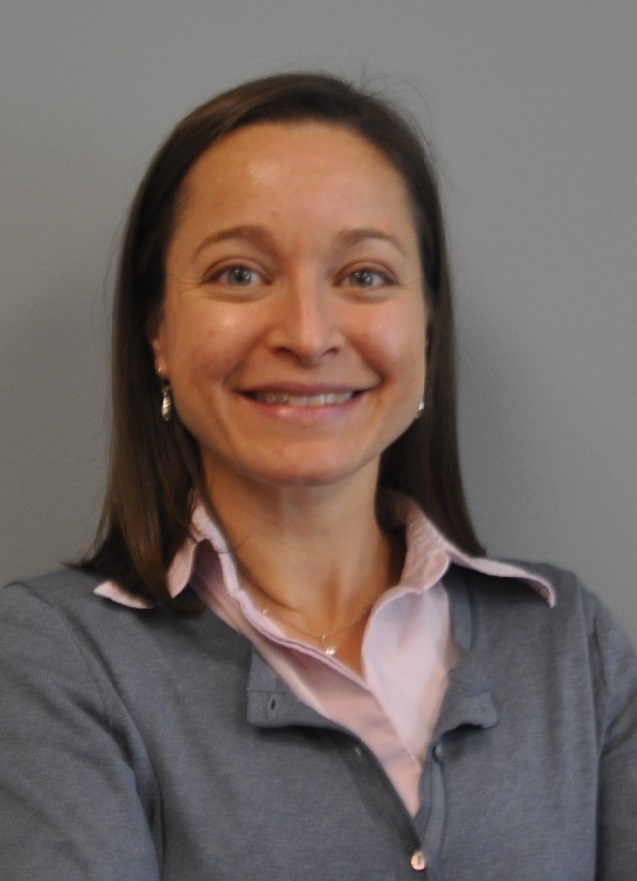
Miriam Rafferty (Moderator)
PT, DPT, PhD, NCS
Miriam Rafferty, PT, DPT, PhD, NCS is a Research Scientist II and physical therapist at the Shirley Ryan AbilityLab (SRALab). She earned her Doctor of Physical Therapy degree from Washington University in St. Louis, her Board Certification in Neurologic Physical Therapy while working at SRALab (formerly Rehabilitation Institute of Chicago), and her PhD in Neuroscience from the University of Illinois at Chicago. Her postdoctoral research training at Northwestern University was in health services research and implementation science. Her current work studies the implementation of early interdisciplinary rehabilitation interventions for people with Parkinson’s disease and other conditions. Dr. Rafferty has taught courses on Parkinson’s disease and other neurological disorders. She has been funded by the Foundation for Physical Therapy, the Agency for Healthcare Research and Quality, National Institute of Disability, Independent Living, and Rehabilitation Research, the Parkinson’s Foundation and the Davis Phinney Foundation. Her work is published in Journal of Neurologic Physical Therapy, Journal of Parkinson’s Disease, and Neurorehabilitation and Neural Repair. Dr. Rafferty is co-chair of the ANPT Health Promotion and Wellness Task Force.
Miriam Rafferty receives Parkinson's-related research funding from the DOD and NIDILRR. As well as honorarium for PT and exercise-related activities from the Parkinson's Foundation.
-
Register
- Non-member - Free!
- PT Member - Free!
- Reviewer - Free!
- More Information
-
Contains 3 Component(s), Includes Credits
CPG for AFO and FES post-stroke
The purpose of this course is to introduce the CPG in order to provide evidence to guide clinical decision-making for the use of either AFO or FES as an intervention to improve body function and structure, activity and participation as defined by the International Classification of Functioning, Disability and Health (ICF) for individuals with post-stroke hemiplegia with decreased lower extremity motor control.
Course published July 2024

Lisa Brown PT, DPT, NCS (Moderator)
Clinical Associate Professor
Boston University Sargent College
Dr. Lisa Brown is a Clinical Associate Professor in the Department of Physical Therapy at Boston University Sargent College where she is a core faculty member in the Doctor of Physical Therapy Program. Dr. Brown received her Doctor of Physical Therapy degree from the MGH Institute of Health Professions in 2009 with a certificate of Advanced Study in Neurology, and her BS in Physical Therapy from the University of Vermont in 1993. Dr. Brown is an ABPTS Board certified Neurologic Clinical Specialist since 2009. Dr. Brown is co-lead author on the clinical practice guideline on the use of ankle foot orthoses and functional electrical stimulation post stroke and a member of the Knowledge Translation Task force for the CPG. She has clinical experience and has presented at national and international conferences. Dr. Brown is a member of the American Physical Therapy Association, the Academy of Neurologic Physical Therapists, and has 25 years of clinical practice experience. She currently treats individuals with neurologic disorders at the BU Physical Therapy Center.
No disclosures.

Therese E. Johnston, PT, MSPT, PhD, MBA (Moderator)
Professor
Arcadia University
Therese Johnston, PT, MSPT, PhD, MBA is a Professor of Physical Therapy at Arcadia University, Glenside, PA, USA and a per-diem Physical Therapist at Magee Rehabilitation Hospital, Philadelphia, PA. Dr. Johnston received her BA from the University of Pennsylvania, her MBA in Health Administration from St. Joseph’s University, her MS in Physical Therapy from Arcadia University, and her PhD in Physical Therapy from Temple University. Her research has included interventions to improve the health, fitness, and function of children and adults with spinal cord injury or cerebral palsy, with a special focus on the use of functional electrical stimulation and cardiovascular and bone health. Dr. Johnston was the co-lead author on the clinical practice guideline on the use of ankle foot orthoses and functional electrical stimulation post stroke. She has published over 60 articles in peer reviewed journals and has presented nationally and internationally. She is a member of the American Physical Therapy Association and the International Functional Electrical Stimulation Society. She is currently the chair of the EDGE (Evaluation Database to Guide Effectiveness) task force within the Academy of Physical Therapy Research.
No disclosures.

Elizabeth Cornforth PT, DPT, NCS (Moderator)
Assistant Professor
MGH Institute of Health Professions
Dr. Elizabeth Cornforth is a faculty member in the physical therapy program at the MGH Institute of Health Professions in Boston, MA, where she helps to teach their neurological content and also maintains a clinical appointment in the outpatient department at Spaulding Rehabilitation Hospital. She has a diverse clinical background working in both the inpatient and outpatient physical therapy environment over the last two decades with individuals with neurological diagnoses. Beth served as a member of the Critical Appraisal Team for the Orthotics and Neuroprosthetics Clinical Practice Guideline and as a Co-Chair for the Knowledge Translation Taskforce for the Orthotics and Neuroprosthetics Clinical Practice Guideline. She is passionate about improving the physical therapy outcomes for individuals with neurological diagnoses and teaching the next generation of physical therapists that will work with them.
No disclosures.
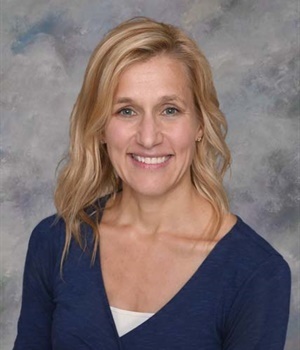
Bobbette Miller, DPT, NCS (Moderator)
Clinical Associate Professor
University of Oklahoma Health Sciences
Bobbette Miller, DPT, NCS, is a physical therapist, educator, and researcher. As a faculty member at the University of Oklahoma Health Sciences, she brings extensive expertise in neurologic physical therapy to both the classroom and clinical settings. Additionally, she plays a pivotal role in patient care at the Oklahoma Medical Research Foundation MS Center of Excellence, where their clinical insights contribute to advancing treatments for Multiple Sclerosis. She is committed to excellence in education and patient care and is dedicated to empowering fellow physical therapists through continued learning and development.
No disclosures.

Megan Greenwood DPT, PCS, NCS (Moderator)
Physical Therapist
Hasbro Children’s Hospital
Dr. Megan Greenwood is a practicing physical therapist at Hasbro Children's Hospital and is a board certified Pediatric Clinical Specialist, Neurologic Clinical Specialist and member of the Knowledge Translation Task Force.
No disclosures.

Ryan Koter, DPT, NCS (Moderator)
Physical Therapist
Shepherd Center
Dr. Ryan Koter is a practicing physical therapist at the Shepherd Center and is a board certified Neurologic Clinical Specialist and member of the Knowledge Translation Task Force.
No disclosures.
-
Register
- Non-member - Free!
- PT Member - Free!
- Reviewer - Free!
- More Information
-
Register
-
Contains 4 Component(s), Includes Credits
PART 2 of this Webinar series will introduce interventions to advance the clinical practice for treatment of autonomic dysfunction, as well as problem-solve how to overcome barriers when working with this complex patient population. ANPT Hot Topic Webinar from June 12, 2024
Autonomic dysfunction is a rapidly evolving area in medicine due to improved understanding of its role in persistent post-concussion symptoms (PPCS) and long-COVID. Approximately 70 million people worldwide are affected by autonomic disorders. The umbrella term dysautonomia is inclusive of more than 15 subtypes associated with dysfunction of the autonomic nervous system (ANS), with three of the most prevalent being Orthostatic Intolerance (OI), Postural Orthostatic Tachycardia Syndrome (POTS), and Orthostatic Hypotension (OH). Dysautonomia is often triggered by various neurological conditions or immune system responses such as brain injury, Multiple Sclerosis, and Parkinson’s Disease, as well as viral infections including COVID-19. As recognition improves, some patients will be identified as having autonomic dysfunction and may present with only mild symptoms. However, the majority of patients experience impairment across multiple domains impacting quality of life and community participation with the level of disability being compared to CHF and COPD. Although there is no known cure, prescribed symptom-guided progressive physical exercise is currently accepted as the most effective treatment to improve ANS regulation, regardless of clinical presentation or reported symptoms. Strategies for identifying and managing dysautonomia have been proposed in the literature, with recent updates providing clearer guidelines to physical therapists in clinical management of this evolving condition.
Course Recorded June 2024
-
Register
- Non-member - $40
- PT Member - $30
- More Information
-
Register
-
Contains 4 Component(s), Includes Credits
PART 1 of this Webinar series will aim to improve clinician awareness and understanding of the common autonomic dysfunction subtypes and outline examination techniques. ANPT Hot Topic Webinar from June 5, 2024
Autonomic dysfunction is a rapidly evolving area in medicine due to improved understanding of its role in persistent post-concussion symptoms (PPCS) and long-COVID. Approximately 70 million people worldwide are affected by autonomic disorders. The umbrella term dysautonomia is inclusive of more than 15 subtypes associated with dysfunction of the autonomic nervous system (ANS), with three of the most prevalent being Orthostatic Intolerance (OI), Postural Orthostatic Tachycardia Syndrome (POTS), and Orthostatic Hypotension (OH). Dysautonomia is often triggered by various neurological conditions or immune system responses such as brain injury, Multiple Sclerosis, and Parkinson’s Disease, as well as viral infections including COVID-19. As recognition improves, some patients will be identified as having autonomic dysfunction and may present with only mild symptoms. However, the majority of patients experience impairment across multiple domains impacting quality of life and community participation with the level of disability being compared to CHF and COPD. Although there is no known cure, prescribed symptom-guided progressive physical exercise is currently accepted as the most effective treatment to improve ANS regulation, regardless of clinical presentation or reported symptoms. Strategies for identifying and managing dysautonomia have been proposed in the literature, with recent updates providing clearer guidelines to physical therapists in clinical management of this evolving condition.
Course Recorded June 2024

Lauren Ziaks
PT, DPT, ATC, NCS
Park City Hospital, Intermountain Health, Canyons Region
Dr. Lauren Ziaks earned a Bachelors in Athletic Training and a Doctorate in Physical Therapy, with a concentration in Business, from Northeastern University. Since 2015, Dr. Ziaks has built a specialized comprehensive concussion management program which she now leads at Park City Hospital. She has also served as a lab instructor and guest lecturer for multiple universities over a 10 year period. Her clinical focus is in autonomic disorders and vision and vestibular rehabilitation to address chronic headaches, difficulty with school/work, reading deficits, attention deficits, exercise intolerance, and dizziness and balance issues post head trauma. Dr. Ziaks’ research focuses on examination and treatment of concussion and dysautonomia, which has been disseminated as peer-reviewed publications, poster presentations and conference workshops at local, state and national levels. Her speaking experience includes poster presentations at 10 state and national conferences, workshop presentations at state and national conferences including CSM 2023 and 2024, development of a CEU approved course for PTWebucation and presentations at local and institution-based conferences for more than 6 years.
Lauren has completed paid and unpaid speaking engagements for dysautonomia and concussion management and has written educational content for both disorders.

Jenna Tucker
PT, DPT, NCS, CBIS
Department of Physical Therapy, Kean University
Dr. Jenna Tucker is a Clinical Assistant Professor in the Department of Physical Therapy at Kean University, where she has served as the Neurological Content Coordinator since 2019. Dr. Tucker earned her Doctorate in Physical Therapy, with a minor in psychology, from Northeastern University in 2011. Her clinical practice has included inpatient, outpatient and home-care rehabilitation for adults with neurologic dysfunction, specializing in brain injury. She has been a Board-Certified Clinical Specialist in Neurologic Physical Therapy since 2014 and a Certified Brain Injury Specialist since 2012. She is a member of the Brain Injury Alliance of New Jersey Board of Trustees. Dr. Tucker’s research focuses on brain injury rehabilitation and examination/treatment of dysautonomia. Her speaking experience includes workshop symposia at national and state-wide conferences, poster presentations at international, national and state-wide conferences.
No Disclosures
-
Register
- Non-member - $40
- PT Member - $30
- More Information
-
Register
-
Contains 8 Component(s), Includes Credits
The Concussion Clinical Practice Guideline serves as a tool in the implementation of evidenced informed evaluation and intervention strategies for individuals requiring physical therapy after concussion injury. Physical therapists play a vital role in identification and treatment of impairments contributing to continued symptoms. This course is designed to utilize case-based clinical reasoning to assist learners in application of the CPG in clinical context. 4 clinical cases will be presented in a grand round fashion that span the lifespan for immediate implementation into clinical practice. Contextual factors that also play a role in recovery will also be addressed to enhance experiential learning and real-world scenarios commonly encountered in clinical practice.
Learning Objectives:
By the end of the course, learners will be able to:
- Identify concussion-related impairments contributing to continued symptoms.
- Incorporate patient education specific to contextual factors exacerbating symptoms.
- Integrate evidence-based evaluation components for each clinical trajectory addressed by physical therapy.
- Compare and contrast validated outcome measures utilized to track progress and aid in clinical decision making specific to concussion injury.
- Design appropriate interventional strategies based on objective findings and principles of neuroplasticity for optimal outcomes.
- Discuss the role of a multidisciplinary team approach in concussion management.
- Utilize objective measures to assist in return to activity/school/play decision making.
Course published February 2024
Becky Bliss
PT, DPT, DHSc
Becky Bliss, PT, DPT, DHSc: is an Assistant Teaching Professor in the Doctor of Physical Therapy program at the University of Missouri and is board certified in Neurological Physical Therapy. She also serves the role of Program Coordinator for the Neurological Physical Therapy Residency. She holds her Certificate in Vestibular Rehabilitation from the APTA, as well as Advanced Vestibular Certificate and is an Impact Trained Physical Therapist. Becky graduated from Ithaca College Department of Physical Therapy with a combined undergraduate-graduate Master of Physical Therapy in 2001. She completed her Doctorate in Physical Therapy from Des Moines University in 2014 and her Doctor of Health Science from the University of Indianapolis in 2019. Becky has been actively practicing in the field of physical therapy for 21 years with specialization in concussion management since 2006. Her research interests include dysfunction of the vestibular ocular reflex following mild traumatic brain injury as well as early detection of impairments that lead to post-concussion syndrome and currently has several active studies specific to higher level motor control deficit identification in the sport athlete. Becky is active within the Academy of Neurological Physical Therapy and serves on the Knowledge Translation Committee for the Concussion CPG as well as is part of the core committee of the APTA Concussion CPG Revision group.

Ethan Hood
PT, DPT, MBA
Ethan Hood, PT, DPT, MBA, is an assistant professor in the Doctor of Physical Therapy program at DeSales University in Center Valley, Pennsylvania, where he teaches within the neurologic curriculum. He earned a Bachelor’s of Health Sciences and Master o Physical Therapy from the University of the Sciences in Philadelphia, a Master of Business Administration from Pennsylvania State University, and Doctorate in Physical Therapy from Temple University. He is a board certified clinical specialist in both geriatric and neurologic physical therapy. Ethan has been practicing for 25 years with an emphasis in outpatient neuro, vestibular dysfunction, and concussion management. He has instructed continuing education courses for physical therapists and other healthcare practitioners on the treatment of dizziness and concussion management nationally. He is an active member of both the Academy of Geriatric and Neurologic Physical Therapy, and a member of the ANPT vestibular SIG where he has helped produce vestibular related podcasts for over 8 years. He has published research on concussion assessment and is a member of the ANPT’s Concussion CPG Knowledge Translation Task Force.
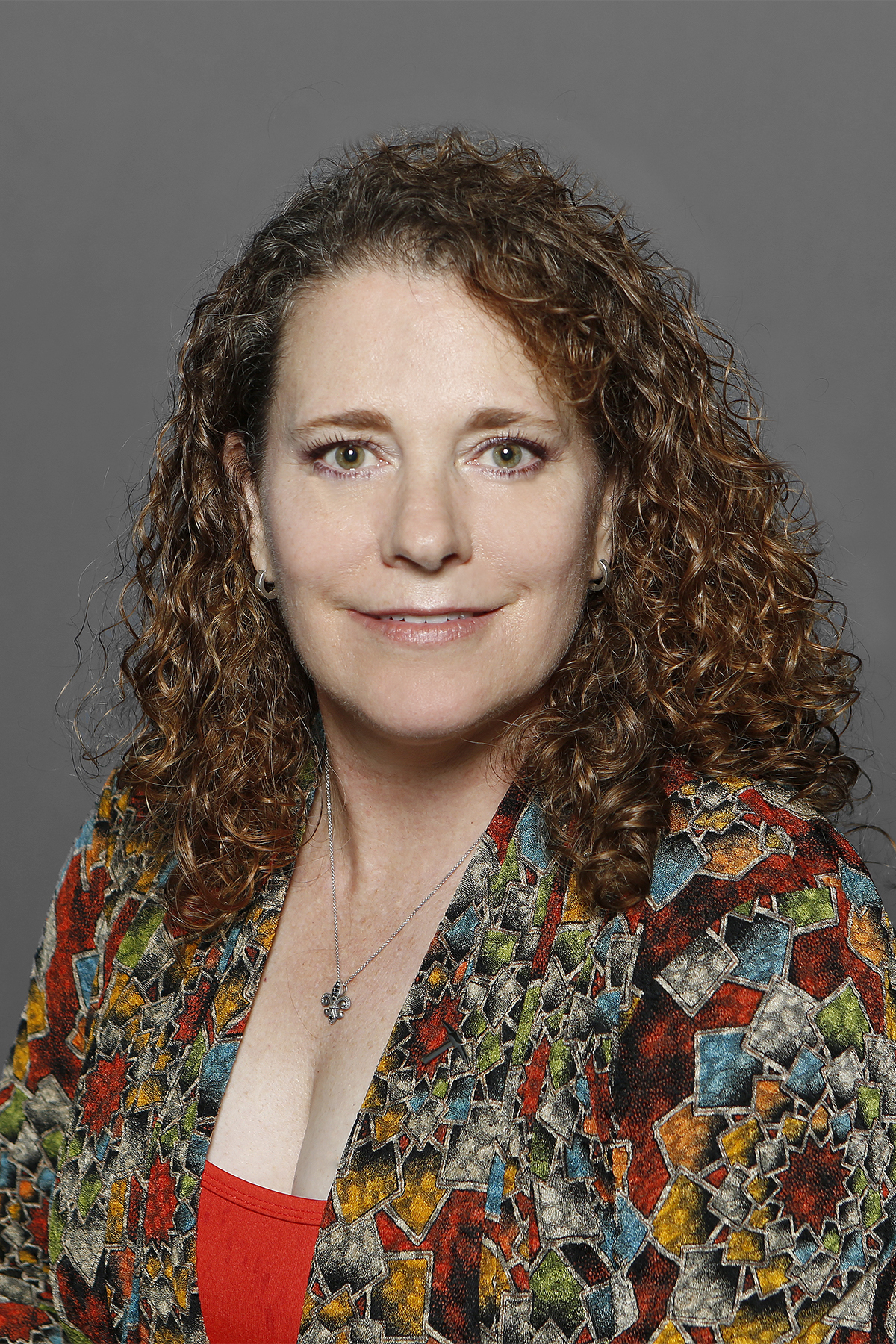
Michelle L Gutierrez
PT, DSc
Michelle L Gutierrez, PT, DSc, is a Clinical Associate Professor at the University of Texas at El Paso. She received her Master’s in Physical Therapy from the University of Texas Medical Branch at Galveston and her Doctor of Science from the University of Alabama Birmingham. She is a Clinical Associate Professor at the University of Texas at El Paso. She has clinical experience working with both orthopedically and neurologically involved service members. Michelle worked in a direct access environment for many years in the military setting. She has published research on concussion assessment. She has taught continuing education courses for practicing therapists and medical providers regionally and nationally. She is a member of several academies of the American Physical Therapy Association including Neurology, Home Health, and Education and has held various elected offices in the Vestibular Rehabilitation Special Interest Group. She is currently serving on the ANPT’s Concussion CPG Knowledge Translation Task Force.
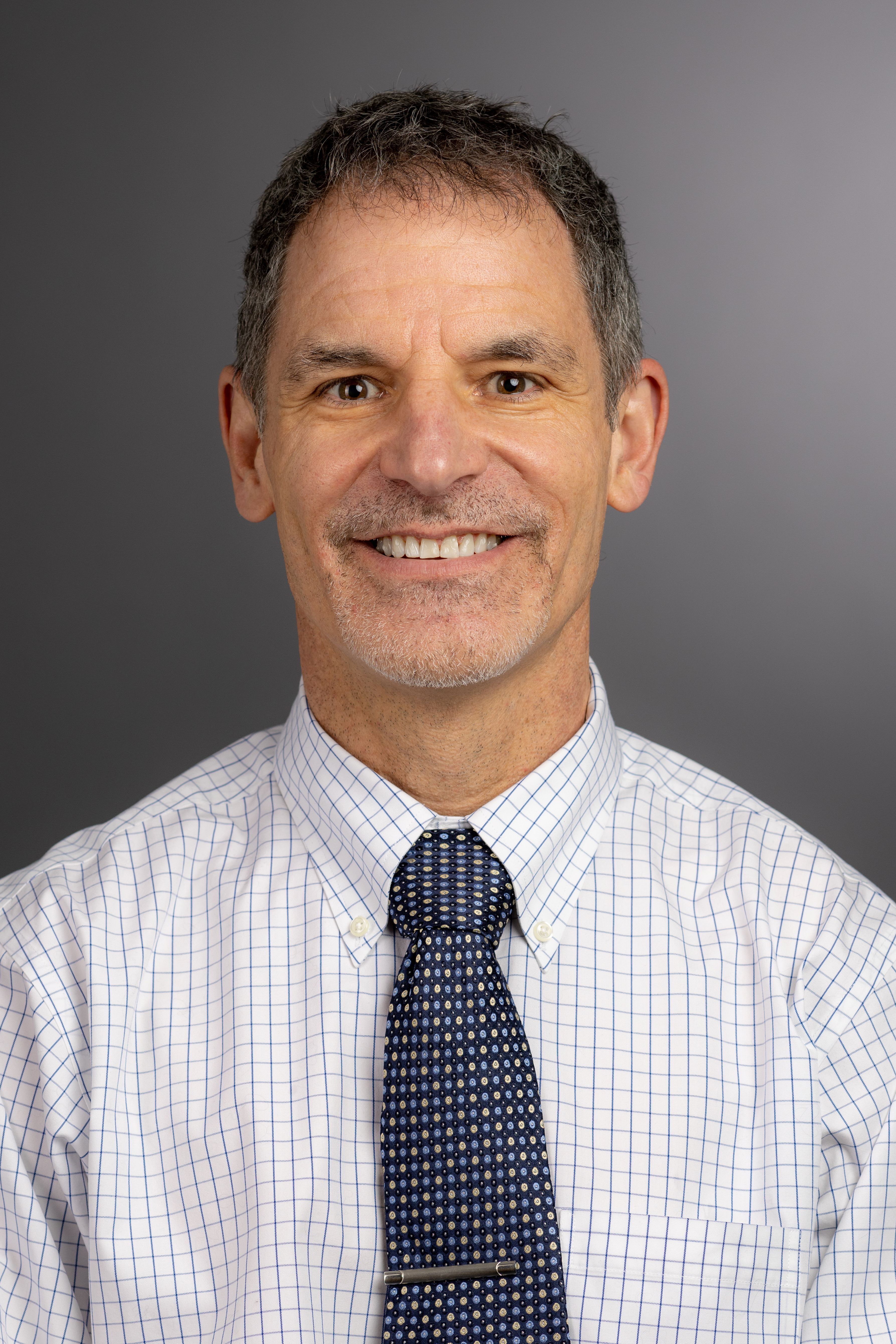
John Heick
PT, PhD, DPT
John Heick is an Associate Professor and Program Director for the Phoenix and Flagstaff campuses and teaches at Northern Arizona University in Flagstaff, Arizona. John received his clinical Doctorate and Master's degree in Physical Therapy from Shenandoah University. John received his Ph.D. in 2015 from Rocky Mountain University of Health Professions in Orthopaedic and Sports Science and his dissertation was on concussion assessment. Prior to physical therapy education, John was a medic in the Air Force for 12 years in a primary care clinic and performed aero- medical evacuation in various aircraft. John has practiced physical therapy for 19 years in various settings to include the emergency department, sports, orthopaedics, neurologic, wound care, aquatics, inpatient rehabilitation, acute care and in a balance center. John continues to practice clinically prn in an orthopaedic/sports outpatient clinic and in a pro bono Orthopaedic clinic. John is board certified by the American Board of Physical Therapy Specialties in orthopaedics, neurology, and sports. John was awarded the James A. Gould Excellence in Teaching Orthopaedics Physical Therapy Award by the Academy of Orthopaedics and is a recipient of the Lucy Blair Service Award by the APTA. John is a member of the ANPT’s Concussion CPG Knowledge Translation Task Force.
-
Register
- Non-member - Free!
- PT Member - Free!
- Reviewer - Free!
- More Information
-
Contains 4 Component(s), Includes Credits
Neurologic clinical practice guidelines (CPGs) are becoming more accepted in neurologic rehabilitation as a means for elevating practice, but clinical predictions rules (CPRs) are also starting to emerge in this area of practice. Evidence indicates that most physical therapy clinicians, educators, and students don’t feel comfortable utilizing CPRs, and those individuals who do feel confident with them are largely focused on musculoskeletal based CPRs. This webinar will compare CPGs and CPRs, and it will discuss how CPRs can be utilized to inform a clinician’s decision-making process when working with individuals post-traumatic SCI. The session will review clinical predictions rules focuses on the likelihood a patient will return to walking at 1 year post injury. Case application will be provided and opportunities to discuss challenges and solutions for implementing the CPR in practice will be presented. ANPT Practice Committee Hot Topics Webinar from January 2022
Course Recorded January 2023
-
Register
- Non-member - $40
- PT Member - $30
- More Information
-
Register

